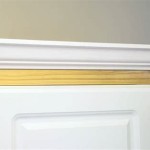Understanding the Kitchen Cabinets Commercial Landscape
The kitchen cabinets commercial landscape is a dynamic and competitive arena, reflecting the central role the kitchen plays in modern homes. Kitchen cabinets are not merely storage solutions; they are integral to the kitchen's aesthetic, functionality, and overall value. As such, manufacturers, retailers, and installers invest significant resources in marketing and advertising to capture consumer attention in this vital market.
The effectiveness of a kitchen cabinets commercial hinges on several factors ranging from targeting the right audience, emphasizing unique selling propositions, and utilizing appropriate advertising channels. A successful campaign will not only generate leads but also convert those leads into tangible sales, ultimately contributing to the growth and profitability of the business.
This article aims to provide an informative overview of the key aspects of the kitchen cabinets commercial landscape. This includes analyzing the market trends, exploring various advertising strategies, and understanding the importance of branding and customer service. By examining these elements, businesses can develop more effective and targeted commercial campaigns that resonate with their desired customer base.
Target Audience Identification and Segmentation
Identifying and segmenting the target audience is a crucial first step in developing an effective kitchen cabinets commercial campaign. The kitchen cabinet market encompasses a diverse range of consumers with varying needs, preferences, and budgets. Understanding these differences allows businesses to tailor their messaging and marketing efforts for maximum impact.
One common segmentation strategy involves grouping consumers based on demographics, such as age, income, and geographic location. For example, younger homeowners may be more interested in modern, minimalist designs, while older homeowners may prefer more traditional styles. High-income consumers may be willing to invest in custom-built cabinets with high-end finishes, while budget-conscious consumers may prioritize affordability and functionality.
Another segmentation strategy focuses on lifestyle and purchasing behavior. Consumers who are renovating their entire kitchen may have different needs and priorities than those who are simply looking to replace existing cabinets. Similarly, consumers who are actively involved in cooking and entertaining may place a greater emphasis on storage solutions and workspace efficiency.
By carefully analyzing the target audience and segmenting them into smaller, more homogenous groups, businesses can develop more targeted and effective commercial campaigns. This may involve creating different advertising materials for each segment, tailoring the messaging to their specific needs and interests, and selecting the most appropriate advertising channels to reach them.
Furthermore, understanding the customer journey is critical. This involves mapping out the steps a consumer takes from initial awareness of a need for new kitchen cabinets to the final purchase decision. By understanding this journey, businesses can identify key touchpoints and develop strategies to influence the consumer at each stage. This may involve providing informative content, offering personalized recommendations, or providing incentives to encourage purchase.
Exploring Advertising Strategies for Kitchen Cabinets
The kitchen cabinets commercial landscape offers a multitude of advertising strategies, each with its own advantages and disadvantages. Selecting the most appropriate strategy depends on the target audience, budget, and overall marketing objectives.
Digital marketing has become increasingly important in recent years, with many consumers turning to the internet to research and compare different kitchen cabinet options. Search engine optimization (SEO) is a key component of digital marketing, ensuring that a business's website appears prominently in search engine results pages (SERPs) when potential customers search for relevant keywords. This involves optimizing website content, building high-quality backlinks, and improving website usability.
Pay-per-click (PPC) advertising is another effective digital marketing strategy that allows businesses to display targeted ads to users who are searching for specific keywords. This can be a cost-effective way to generate leads and drive traffic to a website, as businesses only pay when someone clicks on their ad. Social media marketing is also an important tool for reaching potential customers, allowing businesses to build brand awareness, engage with their audience, and promote their products and services.
Traditional advertising channels, such as print advertising, radio advertising, and television advertising, can also be effective in reaching specific demographics. Print advertising can be useful for targeting local customers, while radio and television advertising can reach a wider audience. However, these channels can be more expensive than digital marketing options, and it can be more difficult to measure their effectiveness.
Content marketing is a valuable strategy. Creating blog posts, articles, videos, and other forms of content that provide valuable information to potential customers can build trust and establish a business as a thought leader in the kitchen cabinets industry. This content can address common questions, provide helpful tips, and showcase the business's expertise. Effective content marketing can attract potential customers to a website and convert them into leads.
Local partnerships can also be a powerful advertising strategy. Partnering with local contractors, interior designers, and real estate agents can help businesses reach a wider audience and generate referrals. This can involve offering incentives for referrals or collaborating on marketing campaigns.
The Significance of Branding and Customer Service
Branding and customer service are essential components of a successful kitchen cabinets commercial strategy. A strong brand can differentiate a business from its competitors, build customer loyalty, and command premium pricing. Excellent customer service can generate positive word-of-mouth referrals and increase customer satisfaction.
A brand is more than just a logo or a name; it is the overall perception that customers have of a business. This perception is shaped by a variety of factors, including the quality of the products and services, the customer service experience, and the marketing communications. A strong brand conveys a clear and consistent message about the business's values, mission, and unique selling propositions.
Investing in brand building involves developing a consistent brand identity, creating compelling brand messaging, and delivering on brand promises. This may involve conducting market research to understand customer perceptions, developing a brand style guide to ensure consistency across all marketing materials, and training employees to embody the brand values.
Customer service is another critical aspect of building a strong brand. Providing excellent customer service involves going above and beyond to meet customer needs and expectations. This includes actively listening to customer concerns, providing timely and helpful responses, and resolving issues quickly and efficiently. Excellent customer service can create loyal customers who are more likely to recommend the business to others.
Online reviews and testimonials play a significant role in shaping customer perceptions. Encouraging satisfied customers to leave positive reviews on online platforms, such as Google, Yelp, and social media, can significantly improve a business's reputation and attract new customers. Responding to both positive and negative reviews in a professional and timely manner demonstrates a commitment to customer satisfaction. Monitoring online reviews and addressing any negative feedback can help businesses identify areas for improvement and maintain a positive online presence.
Building a strong brand often involves community engagement. Supporting local charities, sponsoring community events, and volunteering time to local organizations can build goodwill and strengthen a business's reputation. This can also create opportunities to connect with potential customers and build relationships within the community.
In conclusion, the kitchen cabinets commercial industry demands a comprehensive approach that integrates targeted advertising, effective branding, and exceptional customer service. By understanding the nuances of the market, businesses can craft strategies that drive growth, build customer loyalty, and establish a lasting presence in the competitive landscape.

5 Key Features To Look For In Commercial Kitchen Cabinets

Commercial Kitchens Onepointe Solutions

55 Gorgeous Kitchens With Stainless Steel Appliances Photos Restaurant Kitchen Design Commercial Metal Cabinets

Commercial Cabinets Kitchensbyus Com

Stainless Steel Commercial Kitchen Cabinets Steelkitchen

5 Key Features To Look For In Commercial Kitchen Cabinets

Base Barrier Commercial Kitchen Cabinet

Plastic Laminate Wall Cabinet Onepointe Solutions

Manufactory Commercial Catering Hotel Kitchen Furniture Morden Design Luxury Stainless Steel Cabinet China Cabinets Made In Com

Kavita Metal Stainless Steel Ss Kitchen Cabinets Storage Spaces For Restaurants Hotels Commercial
Related Posts








